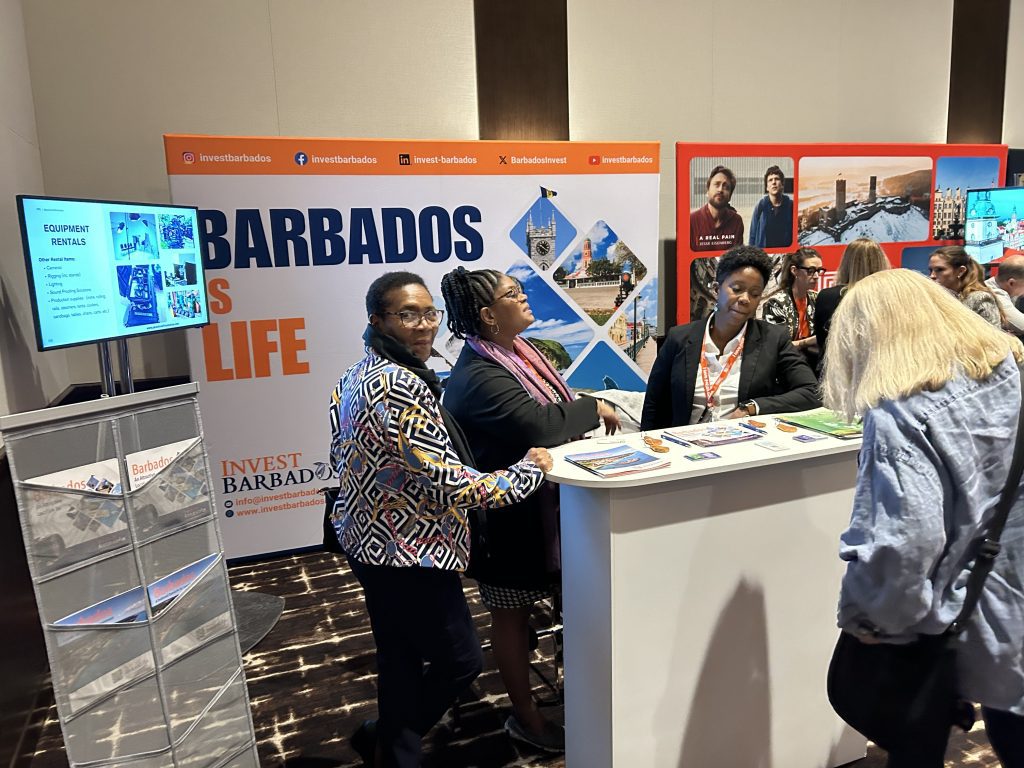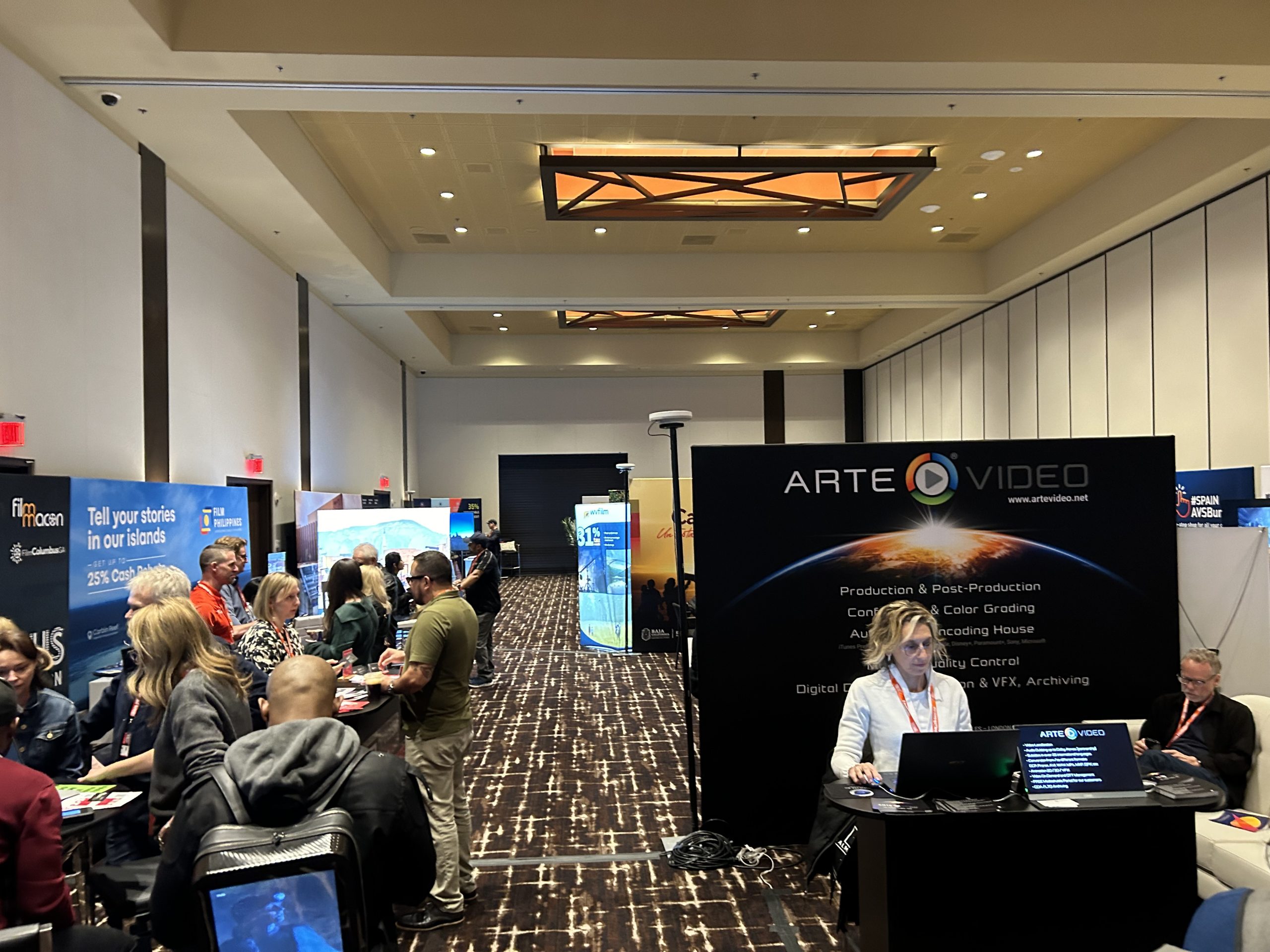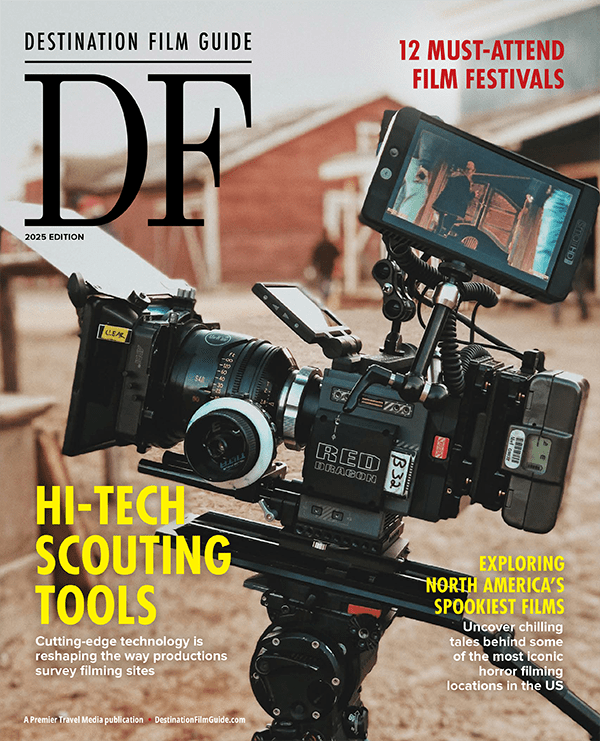A chat with Robin Burt, Vice President for IFTA, the Independent Film & Television Alliance
Be sure to Subscribe for FREE to Destination Film Guide and Download the Magazine for FREE to uncover more unique production content and expert resources.
Destination Film: How has your experience been in Las Vegas?
Robin Burt: We’re trying to get used to a new venue. We were in LA for 44 years, so it was a big move. We decided to make some changes, so we looked at a number of different cities around the country, and we picked Las Vegas. I think it makes the most sense. The Palms has everything that we need. It has a large, contiguous space. It has a 14-screen multiplex for the exhibitors to show their films. We have a huge buyer’s lounge downstairs on Green Street, which the buyers use all day. And then they can walk over to the Brendan Theatre, which is about a minute’s walk.
When it was in Santa Monica, they’d have to take a shuttle bus. And they might spend 10 to 15 minutes on the shuttle bus. It is much more efficient to have everything under one roof.
Now, obviously, with everything going on in Vegas, you’ve got people that are spread out around the city, and they can choose to stay wherever. But the contiguous location and 14 movie theaters here, that’s got to be a godsend for just logistically getting around.
Oh, absolutely. To put everything under one roof was really, really important. I’ve been working for 23 years for the AFM. We had it in Santa Monica. People were happy in Santa Monica. You know, things change. And so, we found a venue that worked perfectly for us.
DF: What’s different or unique about this property?
RB: We’re very fortunate about this hotel because of the size, the contiguous meeting space and the big ballroom. Whereas at the Loews, it used to be on different floors in different locations, which made it not very easy for some of the delegates to find all the different companies. Not everybody wants to take exhibition space. They want the freedom to be able to move around, so we have a private lounge that they can work in and then go up and see all the different sessions.
DF: Who attends the American Film Market?
RB: We have representatives from over 80 countries. The audience is anyone who, in some capacity, touches the production, financing, distribution, and marketing of independent films around the world. We have producers, buyers, sellers, and all of those who are involved in bringing films to life, whether it be agents, lawyers, managers, or people who work below the line, 60% U.S. and about 40% international.
DF: If we did the pie chart of who comes here, what would be the bigger piece of pie on that chart?
RB: The biggest pieces are producers because producers can be a sales agent, a producer, a distributor, or just a pure filmmaker. I would say sales agents are here in force, and this is their market. They’re bringing their new packages here to introduce them to the financiers and the distributors from around the world. That’s really what goes on here.
Then there are completed films. But there’s a whole slew of films that have just come together. There are scripts, maybe talent lined up, but they haven’t shot a single frame yet. And they’re here to test those projects against the marketplace, to talk to buyers around the world, to talk with financiers, and to put the money and the distribution together so that those films can move forward and be produced.
DF: How has the move to Las Vegas influenced attendance at this show?
RB: We weren’t sure what was going to happen. We couldn’t confidently say that we were going to get the same amount of people as we had had in Los Angeles, because in Los Angeles, you could just wake up in the morning and drive over to AFM in Santa Monica. We have far exceeded our own internal goals for what our attendance would be, and we still are seeing people come in, register and buy badges every single day.
So, we don’t even know at this point what the final numbers are, but we have far exceeded what we had anticipated for ourselves. I think it’s going to end up being about relatively the same amount that we would have gotten in Los Angeles, which is about, you know, somewhere between 5,000 and 6,000 people.
 DF: You’ve got a reasonably good concentration from the US, some international as well. Are you happy with who’s showing up for the Location Expo?
DF: You’ve got a reasonably good concentration from the US, some international as well. Are you happy with who’s showing up for the Location Expo?
RB: Absolutely. It’s something that has sort of been my little baby for the last 15 years. There was a time when a lot of film commissioners didn’t necessarily attend the show. And now, because they have all these production tax incentives, there is a desire for them to be at this event because they can meet with producers here with new projects.
Producers are looking for incentives, they’re looking for financing, they’re looking for cultural incentives, perhaps. And so, you’ve got a range of film offices that offer different tax incentives, and that’s what’s driving the business.
Be sure to Subscribe for FREE to Destination Film Guide and Download the Magazine for FREE to uncover more unique production content and expert resources.
DF: Is Location Expo unique to the industry?
RB: There’s one other show called Focus, which is based in London, and that takes place after AFM. But I think they’re drawing more from a European audience, whereas AFM is drawing a global audience.
What we’re offering the producer who comes to this show is the opportunity to meet with film commissions, and they can also attend our conference and AFM sessions, where they can learn about the different aspects and trends of the industry. And then, of course, they can meet with all the film companies that are exhibiting here, so there are lots of opportunities for them.
Film commissions are a big part of it because producers are looking for funding for their films, and in many cases, they’re looking at these tax incentives or cultural incentives to help them make these films.
DF: We’ve often asked the question: Who’s deciding a film’s location? Is it the producer, the director or the location scout?
RB: Because financing is so important today, based on my experience here, it seems to be leaning more towards the producer who’s got to make the numbers work because it is a very competitive industry. And costs are increasing. So maybe the pendulum is switched a little bit more in that direction.
Obviously, I don’t produce films; we put on a show where you bring everybody together. My goal is to create an environment where people can come together and collaborate. Every film is financed differently. We all know that it’s a very complex process, but the tax incentives nowadays play a very big part in where you decide to shoot, the infrastructure in that country, and the local talent you can tap into. Producers have to crunch the numbers and make those decisions. You step out of the way at that point and let commerce take place and let them do their thing.
DF: Anything else you’re hearing from the market right now?
RB: Tax incentives obviously play a very important role, and I think some film commissions are more assertive, more savvy, and they work with their local jurisdiction and governments to get that in place. Every country or state operates very differently, down to its local talent and the studios it has in its locations. More and more countries are looking at places like Canada because of the stackable incentives, the infrastructure, and how they’re treated.
DF: Based on this year’s show, it looks like you could add more exhibit space to your wish list next year.
RB: It’s tough to tell people no. You always want to accommodate and squeeze them in somewhere. And that’s why I had to put some booths upstairs. I think if I had more space, there would be a greater number of potential people participating in Location Expo, which means there’s even greater value than attendees.
Because now you have the opportunity to meet with 40 or 50 different countries that are offering tremendous incentives, and that can only grow the industry. But there’s also something about saying we’re sold out.
Be sure to Subscribe for FREE to Destination Film Guide and Download the Magazine for FREE to uncover more unique production content and expert resources.


